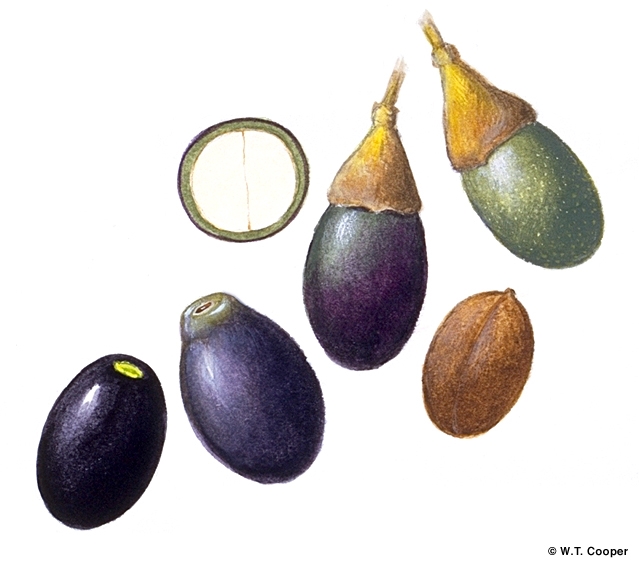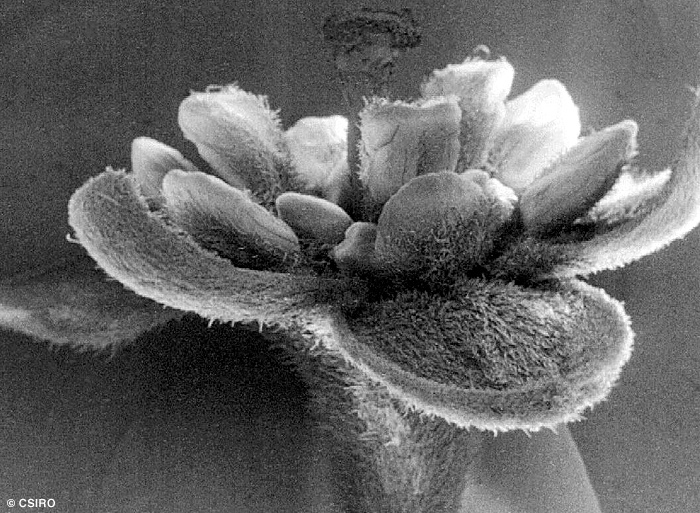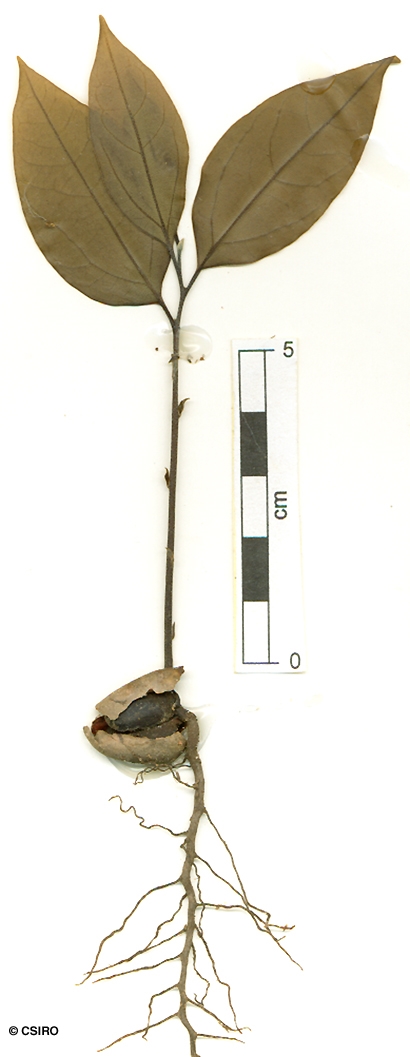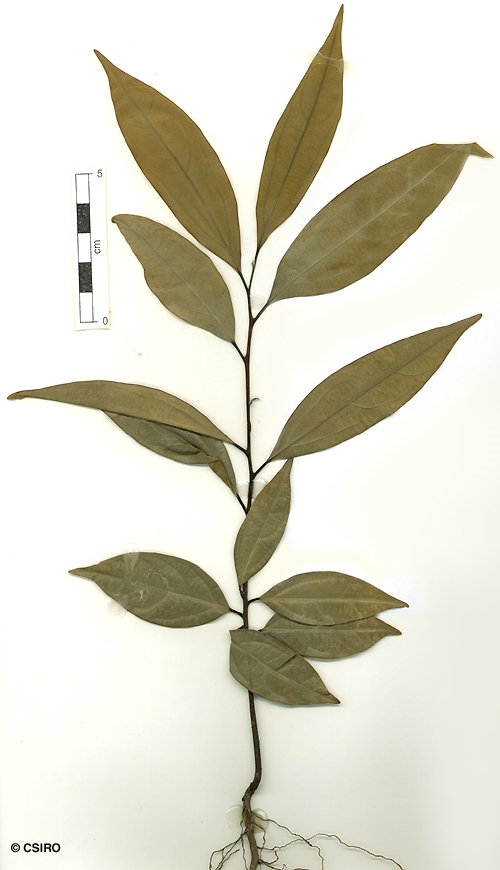Australian Tropical Rainforest Plants - Online edition
Cinnamomum laubatii F.Muell.







Mueller, F.J.H. von (1865) Fragmenta Phytographiae Australiae 5: 165. Type: In silvis montium prope Rockinghams Bay, e.g. Seaview Range; Dallachy.
Cassia Cinnamon; Pepperberry; Camphorwood; Pepperwood; Brown Beech; Beech, Brown
Strong peppery odour readily detected in the blaze.
Freshly broken twigs emit a peppery odour. Twigs 4-angled when young but terete when older, clothed in straight, white or pale brown, appressed hairs when young but glabrous when older. Leaf blades about 8-14.5 x 2-4 cm, slightly glaucous on the underside, clothed in straight, white or pale brown, appressed hairs. Midrib flush with the upper surface. Petioles flat or channelled on the upper surface. Two main lateral veins depart from the midrib about 5-15 mm from the junction of the leaf blade and petiole. Oil dots visible with a lens.
Tepals about 3.5-4.8 mm long, Stamens nine (six opening inwards and three opening outwards). Staminodes three.
Fruiting receptacle or cupule entire at the apex. Fruits about 16-22 x 13-14 mm when ripe.
At the tenth leaf stage: leaf blade glaucous on the underside, penninerved, however, three veins are prominent; oil dots numerous but can be difficult to see even with a lens; terminal bud clothed in dense pale hairs. Seed germination time 10 to 34 days.
Fruit eaten by Fruit Pigeons, Cassowaries and Musky Rat-kangaroos. Cooper & Cooper (1994).
This species produces millable logs and the sawn timber is marketed as Pepperwood, a useful general purpose timber. Wood specific gravity 0.46-0.48. Hyland (1989).





